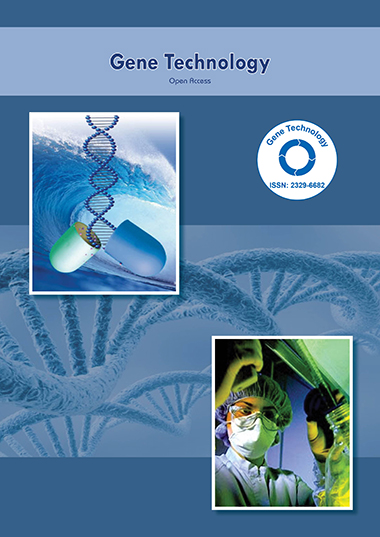Indexed In
- Academic Keys
- ResearchBible
- CiteFactor
- Access to Global Online Research in Agriculture (AGORA)
- RefSeek
- Hamdard University
- EBSCO A-Z
- OCLC- WorldCat
- Publons
- Euro Pub
- Google Scholar
Useful Links
Share This Page
Journal Flyer

Open Access Journals
- Agri and Aquaculture
- Biochemistry
- Bioinformatics & Systems Biology
- Business & Management
- Chemistry
- Clinical Sciences
- Engineering
- Food & Nutrition
- General Science
- Genetics & Molecular Biology
- Immunology & Microbiology
- Medical Sciences
- Neuroscience & Psychology
- Nursing & Health Care
- Pharmaceutical Sciences
Editorial - (2021) Volume 10, Issue 3
The haploid cells delivered by meiosis from a male and female will circuit to make a phone
Arez Sayadi*Received: 14-Jun-2021 Published: 05-Jul-2021, DOI: 10.35248/2329-6682.21.10.e119
Description
In meiosis, DNA replication is trailed by two rounds of cell division to deliver four girl cells, each with a large portion of the quantity of chromosomes as the first parent cell. The two meiotic divisions are known as meiosis I and meiosis II. Before meiosis starts, during S period of the phone cycle, the DNA of every chromosome is reproduced with the goal that it comprises of two indistinguishable sister chromatids, which stay held together through sister chromatid attachment. This S-stage can be alluded to as "premeiotic S-stage" or "meiotic S-stage". Promptly following DNA replication, meiotic cells enter a delayed G2-like stage known as meiotic prophase. During this time, homologous chromosomes pair with one another and go through hereditary recombination, a modified interaction where DNA might be cut and afterward fixed, which permits them to trade a portion of their hereditary data. A subset of recombination occasions brings about hybrids, which make actual connections known as chiasmata (particular: chiasma, for the Greek letter Chi (X)) between the homologous chromosomes. In many creatures, these connections can help direct each pair of homologous chromosomes to isolate away from one another during Meiosis I, bringing about two haploid cells that have a large portion of the quantity of chromosomes as the parent cell.
During meiosis II, the attachment between sister chromatids is delivered and they isolate from each other, as during mitosis. At times, every one of the four of the meiotic items structure gametes like sperm, spores or dust. In female creatures, three of the four meiotic items are regularly wiped out by expulsion into polar bodies, and only one cell creates to deliver an ovum. Since the quantity of chromosomes is split during meiosis, gametes can meld (for example preparation) to frame a diploid zygote that contains two duplicates of every chromosome, one from each parent. Consequently, rotating patterns of meiosis and treatment empower sexual multiplication, with progressive ages keeping up similar number of chromosomes. For instance, diploid human cells contain 23 sets of chromosomes including 1 sets of sex chromosomes (46 aggregate), half of maternal beginning and half of fatherly beginning. Meiosis produces haploid gametes (ova or sperm) that contain one bunch of 23 chromosomes. At the point when two gametes (an egg and a sperm) intertwine, the subsequent zygote is indeed diploid, with the mother and father each contributing 23 chromosomes. This equivalent example, yet not similar number of chromosomes, happens in all creatures that use meiosis.
Citation: Sayadi A (2021) The H aploid Cells Delivered by Meiosis from a Male and Female Will Circuit to Make a Phone. Gene Technol. 10:e119.
Copyright: © 2021 Sayadi A. This is an open-access article distributed under the terms of the Creative Commons Attribution License, which permits unrestricted use, distribution, and reproduction in any medium, provided the original author and source are credited.

